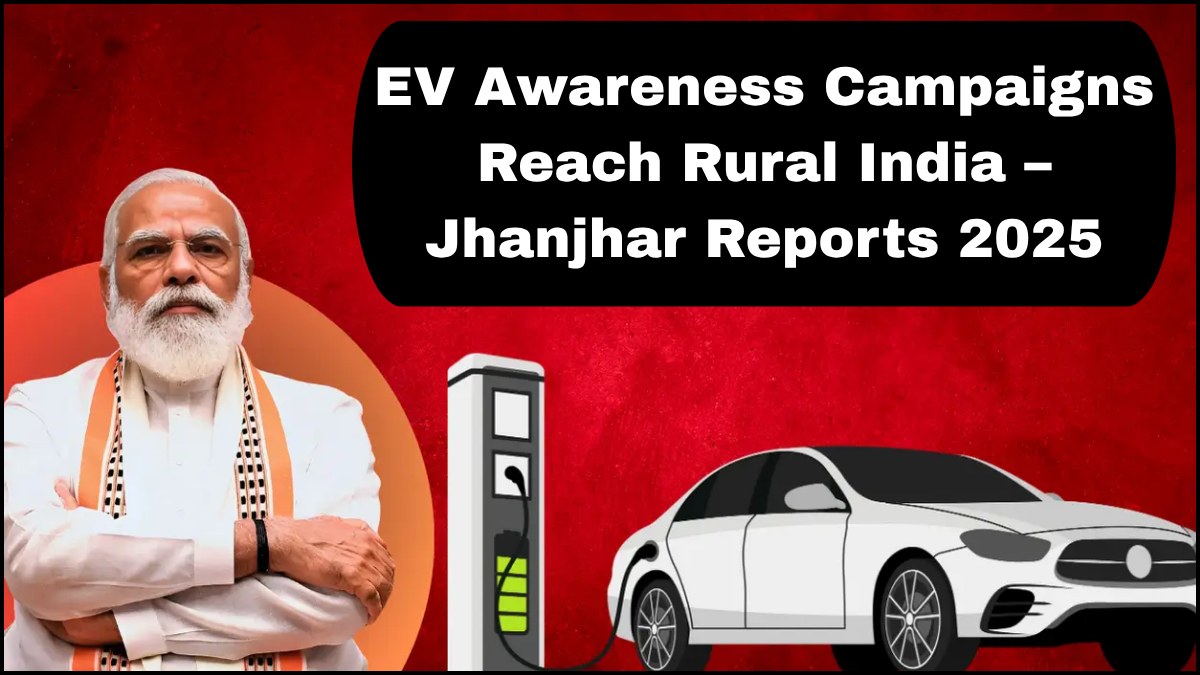India’s transition toward electric mobility is no longer confined to urban corridors. In 2025, the Rural EV Awareness Drive has made significant inroads into the country’s villages, igniting conversations around sustainable transportation, economic opportunities, and cleaner living.

Growing Momentum: The Rural EV Awareness Drive
Spearheaded by a mix of government initiatives, private EV manufacturers, and grassroots organizations, the rural EV awareness drive has started transforming how villages view mobility. Jhanjhar district in Rajasthan has become a prime example of this movement, with its local panchayats, youth clubs, and schools actively participating in EV education programs.
What sets these campaigns apart is their emphasis on demystifying electric vehicles for first-time users. Rather than high-tech jargon, the sessions focus on relatable issues: affordability, charging access, maintenance, and job creation. Village residents, many of whom rely on two-wheelers and small commercial vehicles, are shown the long-term savings and environmental benefits EVs can bring.
Key Campaign Strategies Driving Impact
- Door-to-Door Education: Volunteers visit homes, explaining the basics of EV operation and advantages over petrol or diesel vehicles. Leaflets in local languages, along with on-the-spot demonstrations, make the information easy to digest.
- Interactive Village Exhibitions: Temporary EV exhibitions are set up in village squares, allowing people to test ride e-rickshaws, e-bikes, and mini electric trucks. Local farmers, often skeptical, get to see firsthand how EVs can be useful for transporting goods or produce.
- School-Based Learning Modules: Young students are introduced to clean mobility through visual modules, helping shape early perceptions of sustainable technology. Teachers are trained to become long-term facilitators of EV literacy.
- Incentive Awareness: Many campaigns also focus on informing villagers about existing government subsidies for electric vehicles, such as FAME-II benefits and state-level tax waivers.
The Role of Local Influencers and Micro-Financing
Trusted local figures—teachers, sarpanches, and shopkeepers—are enlisted as ambassadors of EV adoption. Their endorsement helps overcome cultural hesitations and skepticism.
Micro-financing institutions are also stepping up. Partnering with banks and NBFCs, EV companies now offer low-interest loans tailored for rural consumers. These financial products consider the informal income streams common in rural India, making EV ownership more feasible.
Addressing the Infrastructure Gap
A major concern in village mobility is the lack of charging infrastructure. To counter this, the campaigns promote the use of portable solar charging kits and community-level charging hubs. In Jhanjhar, for example, a local co-operative has installed solar-powered chargers in its grain market, allowing farmers to charge e-loaders while trading produce.
Public-private partnerships have also begun mapping routes for EV-friendly travel between clusters of villages, making longer journeys viable.
Impact on Employment and Environment
The rural EV awareness drive isn’t just about transportation. It’s also spawning new livelihoods. Local youths are being trained as EV technicians, creating a demand for repair workshops and spare part vendors. Some women’s self-help groups (SHGs) have started battery charging services from their homes.
Environmentally, the reduced dependence on diesel generators and petrol-based vehicles is already yielding cleaner air in several regions. Noise pollution, a hidden urban-rural problem, has significantly dropped with the advent of quiet EV engines.
Looking Ahead
Jhanjhar’s success is paving the way for replication in other rural districts. States like Bihar, Madhya Pradesh, and Odisha are in various stages of launching their own versions of the rural EV awareness drive. The Ministry of New and Renewable Energy has also indicated plans to increase the allocation of rural EV subsidies in its 2025-2026 budget.
As rural India steps onto the electric highway, the vision of inclusive and sustainable mobility becomes increasingly tangible.
FAQs
Q1: What is the Rural EV Awareness Drive?
A: It’s a coordinated campaign aimed at educating rural populations in India about electric vehicles, their benefits, and how to access them.
Q2: Why is EV adoption important for rural areas?
A: EVs offer cost savings, reduce pollution, and create job opportunities—making them ideal for enhancing village mobility and economic resilience.
Q3: How are villagers being convinced to adopt EVs?
A: Through local language education, hands-on demonstrations, subsidies, and involvement of community leaders.
Q4: What challenges remain?
A: Charging infrastructure, financing, and awareness gaps still need to be addressed, but initiatives are rapidly scaling to close these gaps.
Q5: Is the initiative limited to one state?
A: No. While Jhanjhar in Rajasthan is a notable case, similar drives are being expanded to other rural regions across India.
click here to learn more